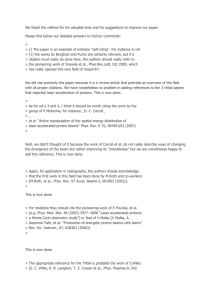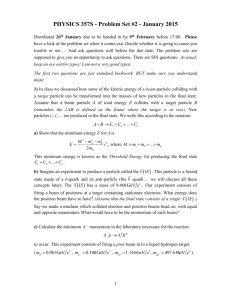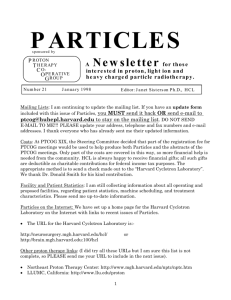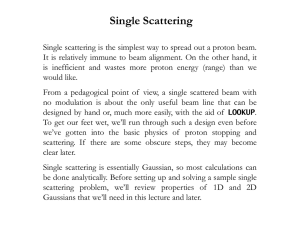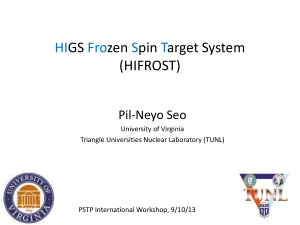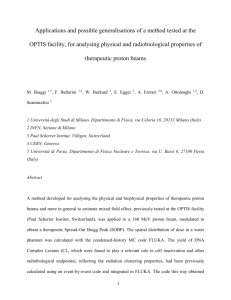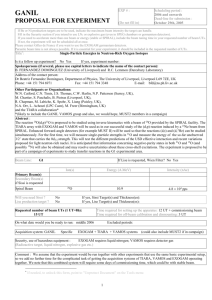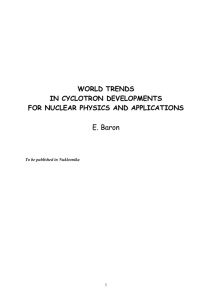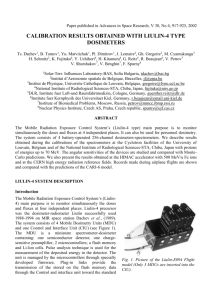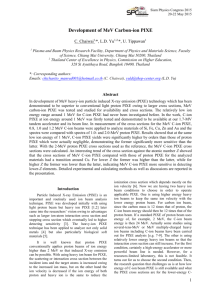2 Energy calibration - Proton Irradiation Facility (PIF)
advertisement
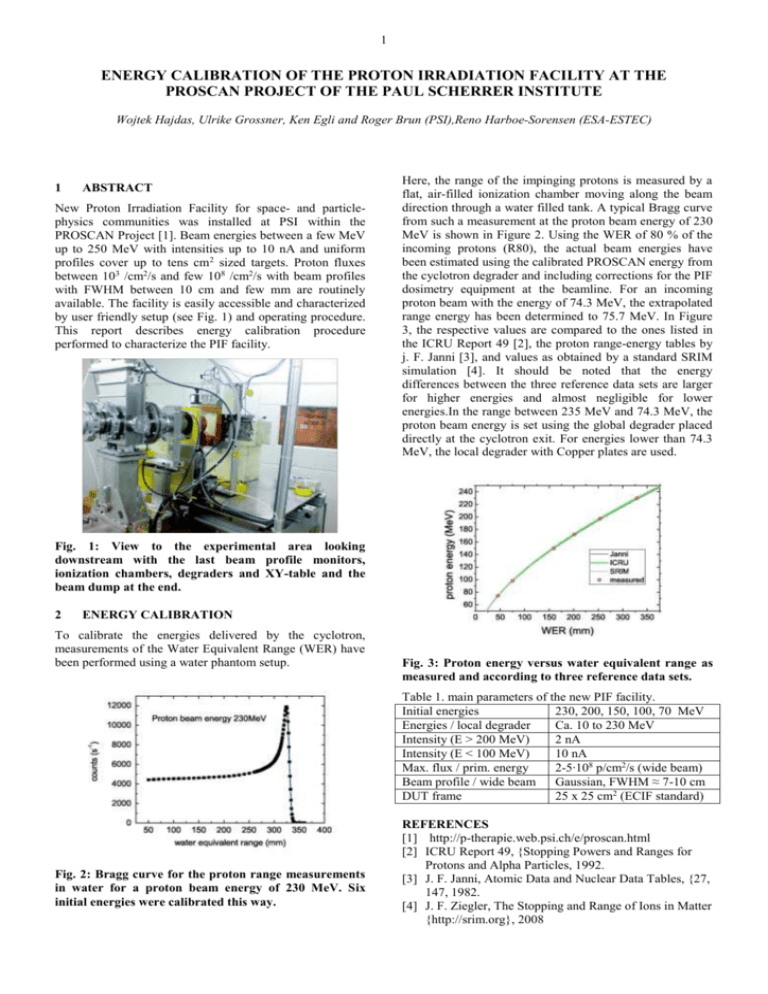
1
ENERGY CALIBRATION OF THE PROTON IRRADIATION FACILITY AT THE
PROSCAN PROJECT OF THE PAUL SCHERRER INSTITUTE
Wojtek Hajdas, Ulrike Grossner, Ken Egli and Roger Brun (PSI),Reno Harboe-Sorensen (ESA-ESTEC)
1
ABSTRACT
New Proton Irradiation Facility for space- and particlephysics communities was installed at PSI within the
PROSCAN Project [1]. Beam energies between a few MeV
up to 250 MeV with intensities up to 10 nA and uniform
profiles cover up to tens cm2 sized targets. Proton fluxes
between 103 /cm2/s and few 108 /cm2/s with beam profiles
with FWHM between 10 cm and few mm are routinely
available. The facility is easily accessible and characterized
by user friendly setup (see Fig. 1) and operating procedure.
This report describes energy calibration procedure
performed to characterize the PIF facility.
Here, the range of the impinging protons is measured by a
flat, air-filled ionization chamber moving along the beam
direction through a water filled tank. A typical Bragg curve
from such a measurement at the proton beam energy of 230
MeV is shown in Figure 2. Using the WER of 80 % of the
incoming protons (R80), the actual beam energies have
been estimated using the calibrated PROSCAN energy from
the cyclotron degrader and including corrections for the PIF
dosimetry equipment at the beamline. For an incoming
proton beam with the energy of 74.3 MeV, the extrapolated
range energy has been determined to 75.7 MeV. In Figure
3, the respective values are compared to the ones listed in
the ICRU Report 49 [2], the proton range-energy tables by
j. F. Janni [3], and values as obtained by a standard SRIM
simulation [4]. It should be noted that the energy
differences between the three reference data sets are larger
for higher energies and almost negligible for lower
energies.In the range between 235 MeV and 74.3 MeV, the
proton beam energy is set using the global degrader placed
directly at the cyclotron exit. For energies lower than 74.3
MeV, the local degrader with Copper plates are used.
Fig. 1: View to the experimental area looking
downstream with the last beam profile monitors,
ionization chambers, degraders and XY-table and the
beam dump at the end.
2
ENERGY CALIBRATION
To calibrate the energies delivered by the cyclotron,
measurements of the Water Equivalent Range (WER) have
been performed using a water phantom setup.
Fig. 3: Proton energy versus water equivalent range as
measured and according to three reference data sets.
Table 1. main parameters of the new PIF facility.
Initial energies
230, 200, 150, 100, 70 MeV
Energies / local degrader
Ca. 10 to 230 MeV
Intensity (E > 200 MeV)
2 nA
Intensity (E < 100 MeV)
10 nA
Max. flux / prim. energy
2-5∙108 p/cm2/s (wide beam)
Beam profile / wide beam
Gaussian, FWHM ≈ 7-10 cm
DUT frame
25 x 25 cm2 (ECIF standard)
Fig. 2: Bragg curve for the proton range measurements
in water for a proton beam energy of 230 MeV. Six
initial energies were calibrated this way.
REFERENCES
[1] http://p-therapie.web.psi.ch/e/proscan.html
[2] ICRU Report 49, {Stopping Powers and Ranges for
Protons and Alpha Particles, 1992.
[3] J. F. Janni, Atomic Data and Nuclear Data Tables, {27,
147, 1982.
[4] J. F. Ziegler, The Stopping and Range of Ions in Matter
{http://srim.org}, 2008

